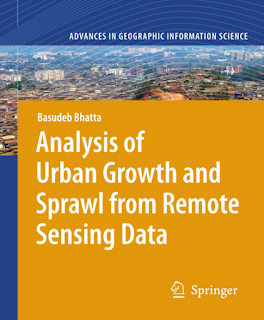Analysis of Urban Growth and Sprawl from Remote Sensing Data
Preface
Urban growth and sprawl is a pertinent topic for analysis and assessment towards
the sustainable development of a city. Environmental impacts of urban growth and
extent of urban problems have been growing in complexity and relevance, generating strong imbalances between the city and its hinterland.
The need to address this complexity in assessing and monitoring the urban planning and management processes and practices is strongly felt in the recent years.
Determining the rate of urban growth and urban spatial configuration, from remote sensing data, is a prevalent approach in contemporary urban geographic studies. Maps of growth and a classified urban structure derived from remotely sensed data can assist planners to visualize the trajectories of their cities, their underlying systems, functions, and structures.
There are currently a number of applications of analytical methods and models available to cities by using the remote sensing data and geographic information system (GIS) techniques, in specific—for mapping, monitoring, measuring, analyzing, and modelling.
The need to address this complexity in assessing and monitoring the urban planning and management processes and practices is strongly felt in the recent years.
Determining the rate of urban growth and urban spatial configuration, from remote sensing data, is a prevalent approach in contemporary urban geographic studies. Maps of growth and a classified urban structure derived from remotely sensed data can assist planners to visualize the trajectories of their cities, their underlying systems, functions, and structures.
There are currently a number of applications of analytical methods and models available to cities by using the remote sensing data and geographic information system (GIS) techniques, in specific—for mapping, monitoring, measuring, analyzing, and modelling.




No comments:
Post a Comment